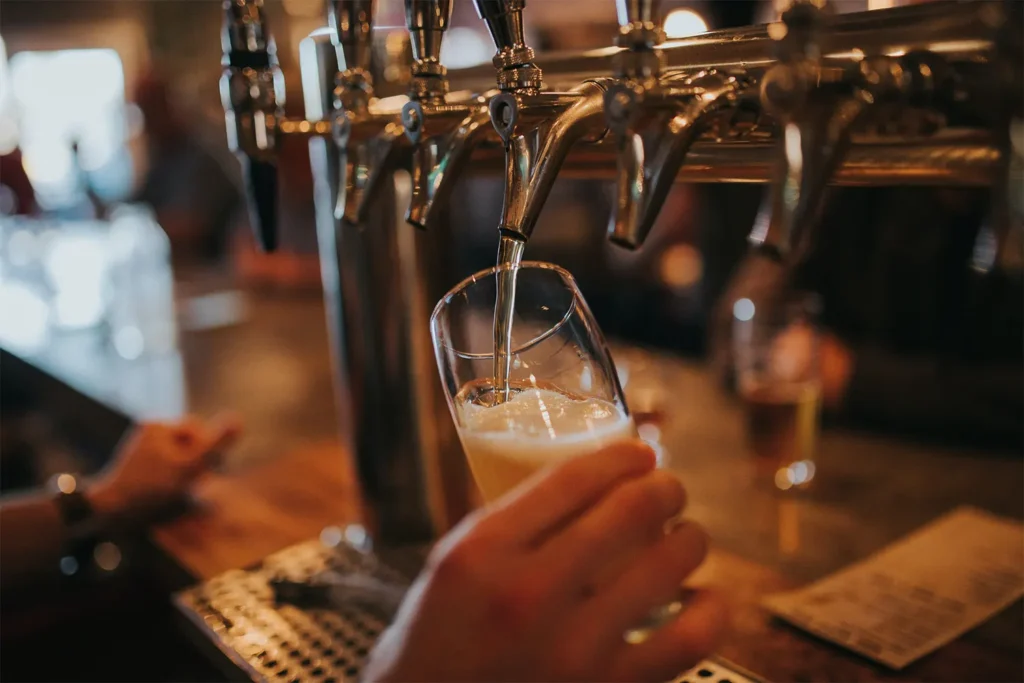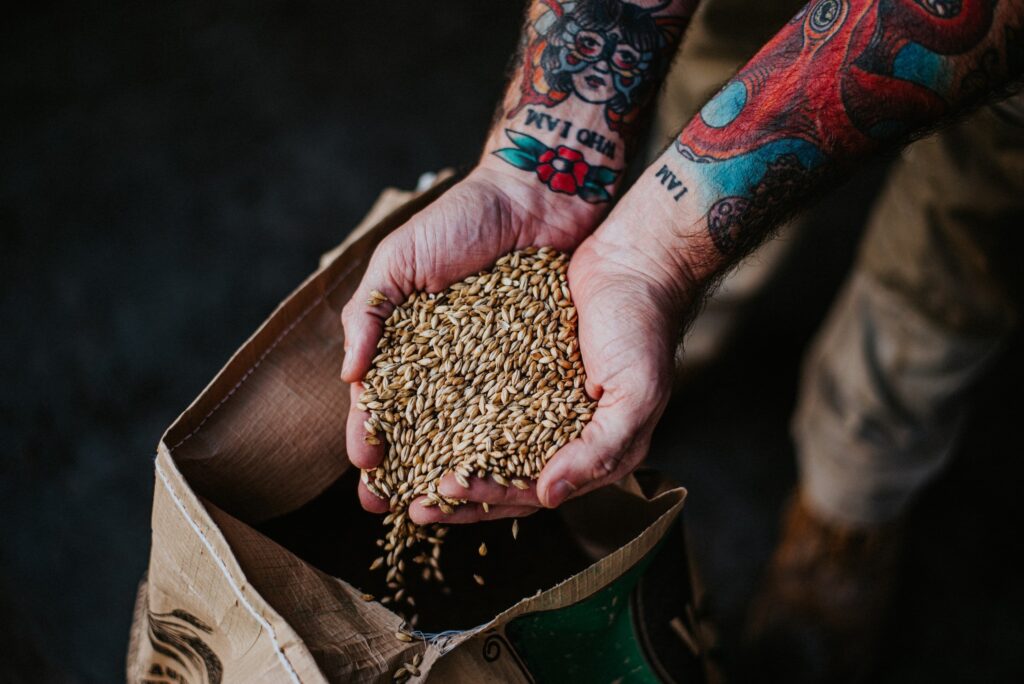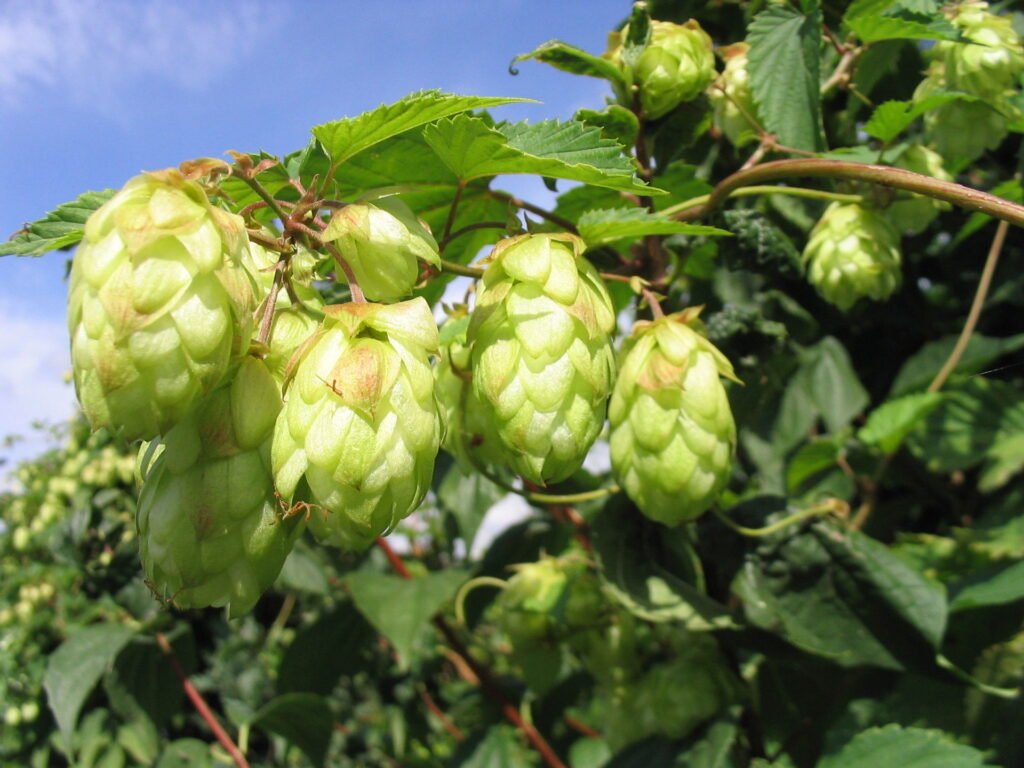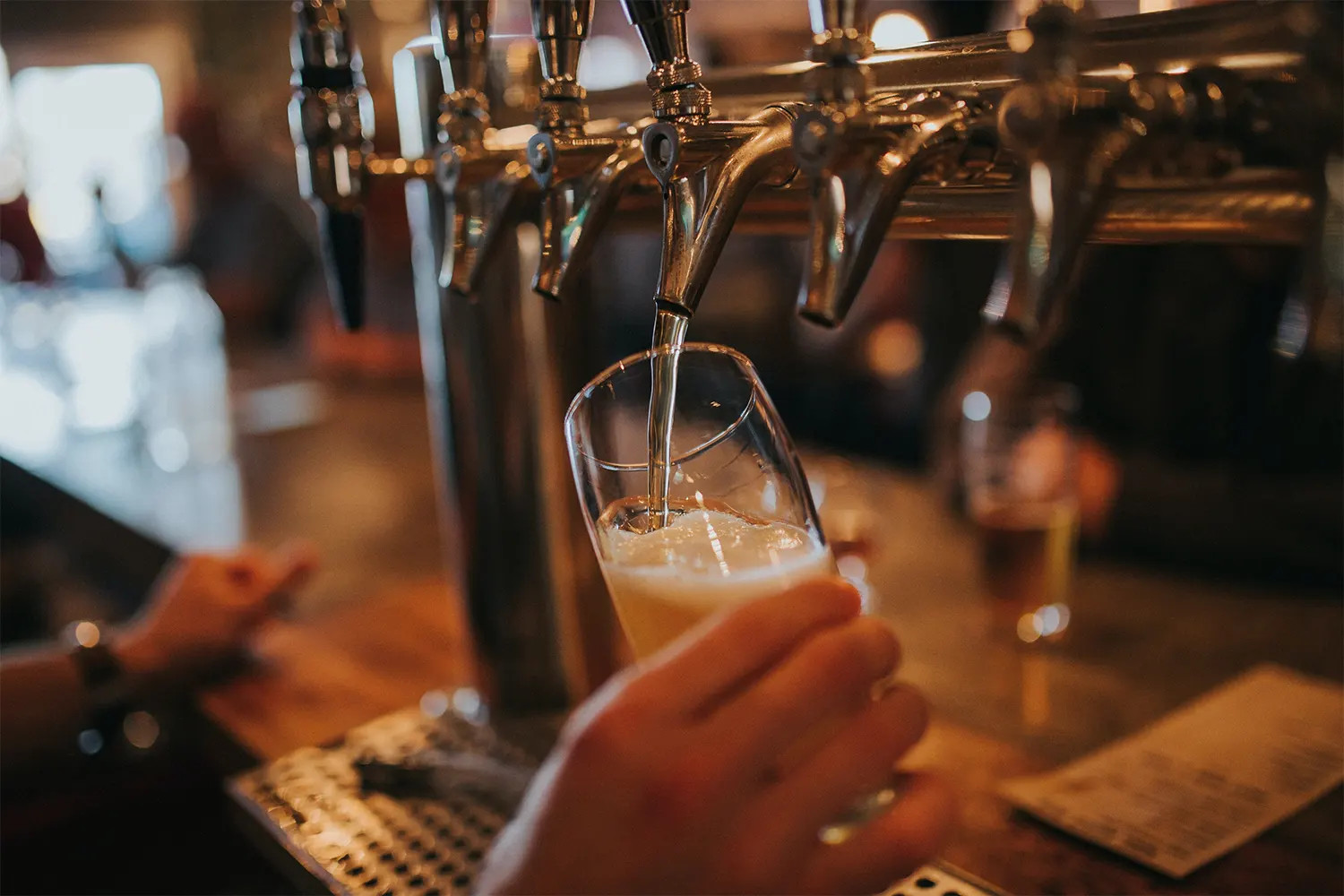In this article, we’ll cover the basics of beer, including its history, ingredients, and the various types of beer. We’ll provide insights into how beer is made, its tasting profiles, and explore the profiles of different beer styles on a country-by-country basis.
What is Beer?
Beer is a fermented alcoholic beverage made from barley malt, hops, yeast, and water. It’s a cornerstone of our society and a source of our civilization.
So much so that the role of grains in sustaining human civilization—whether for bread or beer—has been a subject of debate among scientists and historians.
The Origin of Beer: Where It Comes From
The history of beer dates back thousands of years. Around 10,000 years ago, people in the Mesopotamia region began farming and using wild grains. However, raw grains were hard to digest, so they started to soak and cook them into a porridge.
During this process, the natural fermentation of grains led to the creation of beer. Archaeologists and historians believe that the first written records of beer may have emerged accidentally much earlier.
The oldest known beer inscription, the “Hymn to Ninkasi,” dating back to around 1800 BC, is dedicated to the beer goddess Ninkasi and dates back approximately 4,000 years.
Beer’s role as a significant source of nutrition and as an intoxicant made it a sought-after commodity in the kitchen, social life, and community economy. Moreover, in times when water wasn’t always sterile and could cause illness, beer and wine were important as safe drinks containing beneficial bacteria. Thus, it’s unsurprising to find regulations concerning grains and beer in some of the earliest examples of societal laws.
In Egypt, producers who sold low-quality beer at high prices were punished among themselves. Similarly, Hammurabi’s Code includes regulations concerning the trade of beer.
Beer Production
Beer is a product made solely from natural ingredients. Although the production process and ingredients have remained traditional since its discovery, advancements in technology and science allow us to understand concepts like fermentation, germination, and yeast varieties better, enabling us to control the finer details of the production process.
Main Ingredients of Beer Production: Malt, Water, Yeast, and Hops
Malt Malt is grains that have undergone a process called malting, the first step in preparing grains for beer. If we think of beer as a body, malt is its backbone.
Malting is a process where grains are activated to release nutrients inside the seed.
To make these nutrients soluble in water, the plant tissue protecting the nutrients must be broken down. When the germinated grain meets water, it starts producing enzymes that open the plant tissue, releasing the nutrients.
The grains to be used for malt must first be cleaned. The cleaned barley is soaked and left to germinate. The goal is to feed the yeast the starch, sugar, and amino acids that emerge during germination to produce alcohol and impart flavor to the beer.
Therefore, the producer does not want the germinating plant to consume these nutrients itself and stops their development by kilning them after the desired germination.

The kilning stage is crucial as the temperature correlates with the caramelization of sugars in the malt (red-brown tones bring caramel notes).
Thus, decisions made during kilning significantly determine the character of the resulting beer. Malt defines the texture of the beer.
Water Water constitutes 95% of beer. Its crucial function is to dissolve taste-giving substances. After malting, the malt is ground and mixed with water for mashing.
This process yields a sweet liquid from the starch, sugar, and proteins that become soluble in water. Later, hops and yeast will be added to this liquid, and yeast will convert the sugars into alcohol through fermentation.
The world’s largest beer producer, Brazilian Anheuser-Busch InBev (ABI), owns many underground water sources. Holding more than 30% of global beer production, this company controls 10-12% of the world’s drinkable water resources.
Water has no distinct taste or smell. However, water containing a small amount of minerals has a soft taste. Water with calcium is considered hard. The hardness of water plays a significant role in the taste of the beer.
The oldest document associating hops dates back to the 11th century by German nun Hildegard von Bingen.
Hops are actually cousins to the well-known botanical cannabis plant. Although they lack the psychoactive properties of cannabis, hops’ appearance and aroma profile make their kinship evident.
After mashing, hops are added to the sweet grain water and boiled. During boiling, the aroma of hops transfers to the beer. After cooling, yeast is added to this hopped liquid, and fermentation transforms the liquid into beer.
Hops
Extend the shelf life of beer.
Play
a significant role in its flavor.
Are expensive, so beers using a lot of hops tend to be more expensive.
ABI owns almost all hop plantations in Africa!
Yeast
There are many subtypes of yeast families, and selection among these varieties depends on the desired outcome and the product to be produced. In beer production, yeast not only converts sugars into alcohol and carbon dioxide but also forms the character of the beer.
When it comes to beer fermentation, yeasts can be divided into ale yeasts and lager yeasts. The ale beer yeast is Saccharomyces cerevisiae, while the lager beer yeast is Saccharomyces pastorianus.
These two different yeasts show genetic differences and perform well at different fermentation temperatures. Lager yeasts prefer much colder fermentation temperatures than ale yeasts.
Another distinguishing feature is that ale yeasts form a foamy layer at the top of the fermentation tank (top-fermenting yeast), while lager yeasts settle at the bottom (bottom-fermenting yeast).
Bottom-Fermentation Yeast
Bottom fermentation was applied in the town of Pilsen in 1842. It is used in the production of German lagers and Pilsner-type beers and works at temperatures between 3° and 10°C.
A key feature is that the flavors or smells during the fermentation process are not sharp.
Beers produced with this method have a soft and rounded taste.
Top-Fermentation Yeast
It occurs at temperatures between 15° and 24°C. The fermentation time is shorter than for lager types.
The conversion of sugar to alcohol starts from the top.
It yields more aromatic and fruity results.
Types of Beer
Beer can be categorized into several main styles Lager and Ale The beer world can be divided into two main distinctions: Lager and Ale beers. Almost all beers fall under these two groups.
Lager beer is made with the bottom-fermentation yeast Saccharomyces Pastorianus and colder fermentation, resulting in cleaner and crisper flavors and yielding softer and rounder beers.
The word “Lager” comes from the German “lagern,” meaning to store. Lager beers are left to mature around 0°C after fermentation. During this time, any unwanted aromas produced during fermentation are absorbed by the yeast and settle at the bottom of the tank, resulting in a clean golden beer.
Ale was once the general name for English beers but now refers to a global group of beers made with the top-fermentation yeast Saccharomyces cerevisiae and fermented at higher temperatures. This process gives ale beers a more fruity and layered character. The use of hops is more pronounced in ale beers.
Pilsener and Lager
“Pilsener” takes its name from the Czech city of “Plzen.” It means “from Plzen.” Today, although Lager and Pilsen beers are perceived as the same, Pilsen is a lager beer with a distinct character and special malt, where hops are more pronounced.
Pilsen beer is produced all over the world today, but fundamentally, it can be divided into Czech and German Pilsen. Czech Pilsen has a more pronounced malt character and hop aromas compared to German Pilsen.

White Beer
White beer is different from wheat beer. In the production of white beer, malted barley, unmalted wheat (even other grains like oats), and various spices are used.
This beer is very light yellow-white in color and cloudy. The extended mashing process in white beer production allows for the activity of lactic acid (the acid found in milk) producing bacteria, giving the beer a soft sourness.
It is not filtered (yeast and proteins are preserved). It originated in Belgium, gradually lost popularity and almost disappeared, but was revitalized and became popular again thanks to the Hoegaarden brand.
Belgium’s iconic brand Hoegaarden played a significant role in educating beer enthusiasts about white beer. In the mid-20th century, white beer consumption in Belgium had almost dropped to zero.
Pierre Celis, a former dairy worker who had worked in a beer factory, established the Hoegaarden brand to revive this beer style and became perhaps Europe’s first craft beer producer.
It is rumored that after Hoegaarden beer became too popular to meet demand, the brewery compromised on the time needed to produce its white beer, which took away the beer’s characteristic sourness, leading consumers to start adding lemon to the beer.
However, this has not been confirmed by Hoegaarden or any other source, remaining a beer legend.
Contrary to this rumor, adding a slice of lemon or orange to white beer in the glass is generally not preferred in Europe. It is believed that the oils in citrus peels spoil the taste and kill the foam. Citrus peels are added by the producer during production and integrated into the beer’s aroma profile; adding
an orange or lemon slice separately in service, like adding ice to wine, is a personal choice.
Wheat Beer
Brewing beer predominantly with wheat is a tradition especially unique to Germany.
This is known as “Weißbier” (weissbier), which means “white beer” in German, leading to a historical misunderstanding. It may resemble the Belgian-origin white beer in appearance but is generally more straw-yellow, and dark and amber weissbiers also exist in Germany.
It is bottled unfiltered and traditionally undergoes a second fermentation in the bottle (bottle conditioning), making its color cloudy.
Unlike white beer, malted wheat is used in the production of wheat beer, and spices or lemon & orange peel are not added.
Additionally, a higher amount of wheat is used in wheat beer production compared to white beer. Brewing with wheat is challenging due to its thin husk and high protein content, giving its milled form a sludgy structure that is not easily soluble in water.
The producer overcomes these challenges using yeast, bacteria, and enzymes. The yeast and techniques used in wheat beer production give it a unique aroma profile and characteristic clove notes.
Stout Beers
Stout is a type of beer that is dark in color and full-bodied. Originally emerging in England and Ireland, Stout has become popular worldwide, especially through brands like Guinness.
Stout beers are generally produced using roasted barley and malt.
This roasting process gives the beer its dark color and characteristic flavors of coffee, chocolate, and caramel.
Stout beer varieties vary, and some common subtypes include:
Dry Stout: Originating in Ireland, this type has a dry and bitter structure with chocolate and coffee notes. Guinness is one of the most famous examples of Dry Stout.
Milk Stout: Produced by adding lactose sugar, this type has a sweeter and softer structure. It contains milk and creamy textures with coffee and chocolate notes.

Oatmeal Stout: Made with oats, this type offers a fuller and smoother texture. Oats enhance the body of the beer, creating a rich and creamy structure.
Imperial Stout: Known for its high alcohol content and full body, this type typically has dark fruit, chocolate, coffee, and caramel notes. It was originally produced for the Russian nobility.
Stout beers are generally considered more suitable for drinking in winter and cold weather. The intense and rich flavor profiles of these types of beers are appreciated by many beer lovers.
Both stouts and porters are traditionally ale-type beers. While “stout” was once a general term used for strong and robust beers, the historical emergence of a strong porter beer variety called “Stout Porter” has intertwined these two terms.
Porter Beer
Porter is a dark-colored beer that emerged in 18th century England and was particularly popular in London.
The name “Porter” comes from the dock and railway station workers (porters) who frequently consumed this type of beer at that time. Porter is known for its dark color and rich flavor profile obtained by using roasted malts.
Key characteristics of Porter beers include coffee, chocolate, and caramel notes. These flavors can vary depending on the degree and type of roasted malts used.
Some Porter types may also have light fruity and spicy notes. Porters generally have a medium to high body and a moderate alcohol content.
There are several subtypes of Porter, including:
Brown Porter: Originating in England, this type is lighter in color and characterized by mild roasted malt flavors. It typically contains chocolate, coffee, and caramel notes.
Robust Porter: Known for its more intense roasted malt flavors and dark color, Robust Porter may also include fruity and spicy tastes.
Baltic Porter: Similar to the previously mentioned Stout type, Baltic Porter is produced in the Baltic countries and is notable for its high alcohol content. It contains dark fruit, coffee, and caramel notes.
Although there are some similarities between Porter and Stout beers, Porters are generally lighter and less full-bodied.
Additionally, the dark roasted barley found in Stouts is less dominant in the flavor profile of Porters. Both types are ideal for those who enjoy dark-colored beers and rich flavor profiles.
Pale Ale and IPA
In times when beers had dark colors like porters, lighter beers were generally called “pale.” Beers shipped from England to India were light in color but strong in character, ales with high alcohol content and robust hop bitterness that could withstand the long sea journey.
As demand for IPAs sent to India increased, more breweries began producing IPAs. India Pale Ale became popular in England and eventually started to be referred to simply as pale ale.
Today, pale ale generally refers to ale beers with a honey & copper color and a pronounced hop bitterness.

Blond Ale
Blond ales are similar in appearance to Pilsners but differ in taste. While Pilsners are produced with bottom fermentation, blond ales
are made with top fermentation (ale yeast). They are crisp, fruity beers with a palate of toasted bread sweetness and a malt finish.
In the context of ale beers, blond ales have a gentle hop bitterness, and brewers often prefer using soft water to further round out the hop bitterness when making this beer. Blond Ales stand out for their easy drinkability and delicate structure.
Monastic Beer and Trappist
In Europe, monasteries were self-sufficient entities with their own lands. Monks spent their days in prayer and work.
They baked their own bread, farmed, raised livestock, sewed their own clothes, and ensured everything they made was of the highest quality.
They also had centuries to perfect their beer brewing skills, contributing to many advancements in beer production (such as bottle re-fermentation), with hop usage also beginning thanks to a German nun.
Monastic beer is not technically a style of beer, but there are some common characteristics. Generally, they are ale-type beers produced in monasteries and can vary greatly in color and style. They often use a significant amount of hops.
After becoming famous, monastic beers were produced under the monastic beer name by secular producers unaffiliated with monasteries or monks for years, but eventually, the appellation “Trappist Beer” was protected through legal action initiated by the Trappist order, a branch of Christianity.
Trappist beers are ale-type, unpasteurized, produced with added sugar, and undergo fermentation in the bottle.
There are seven Trappist breweries in Europe, and the beers are produced under the supervision of monks. Their appellation is protected by a logo on the bottles.
Today, the most well-known types of monastic beer are dubbel and tripel beers, known for their high alcohol content yet refined character.
It is known that monks produce another version for their own consumption, which is not widely distributed.
Dubbel: A dark ale, Dubbel gets its color not from roasted malts but from the addition of dark caramelized sugar syrup. This gives it soft, caramel-like, burnt, dry fruit-like notes.
While not as high in alcohol as a Tripel, they are generally dry but can leave a sweet taste on the palate.
Tripel: Tripels are typically dark golden in color, strong, and full-bodied but easy to drink. Despite being made with ale yeast, sugar is added, and a cold fermentation process is applied.
Secondary fermentation occurs in the bottle. Tripel production often involves a significant amount of hops.
They are complex in taste and high in alcohol, characterized by a dense foam, fruity notes, and a complex spiciness. Tripel is among the strongest of the classic styles.
Singel: These are rare and not commonly found in the market. Singels are known to be produced by monks for their own tables.
While the initial strong brews of dubbel and tripel are sold, singels are produced using the re-milled grains, resulting in light-colored, low-alcohol, and strong hop character beers consumed within the monastery.
